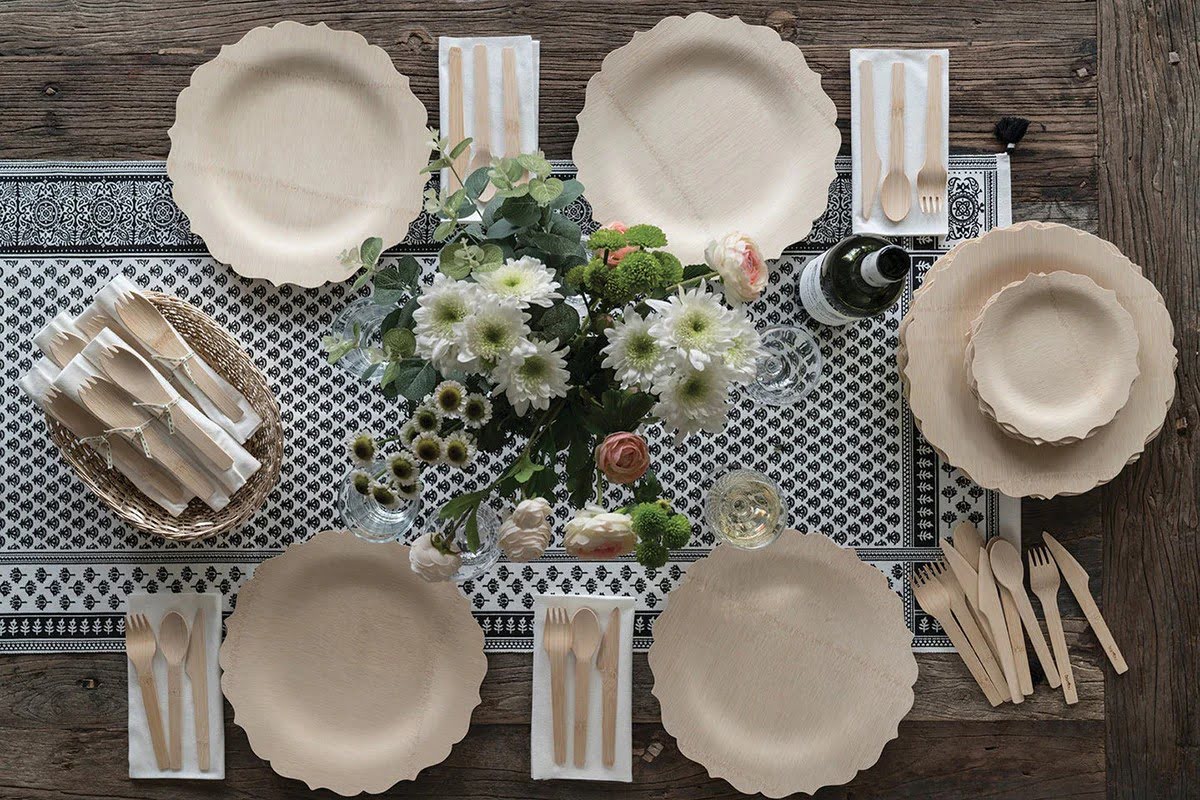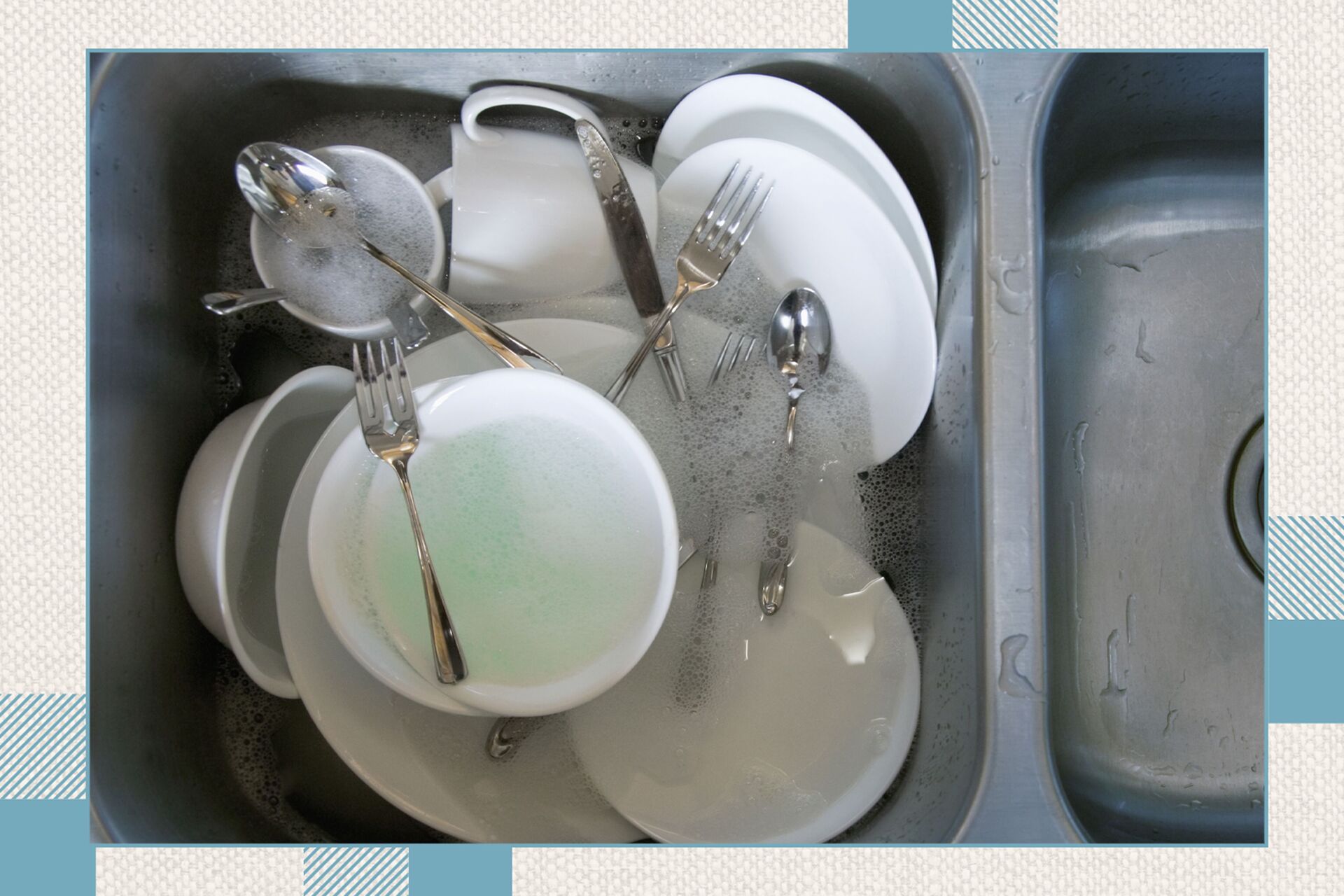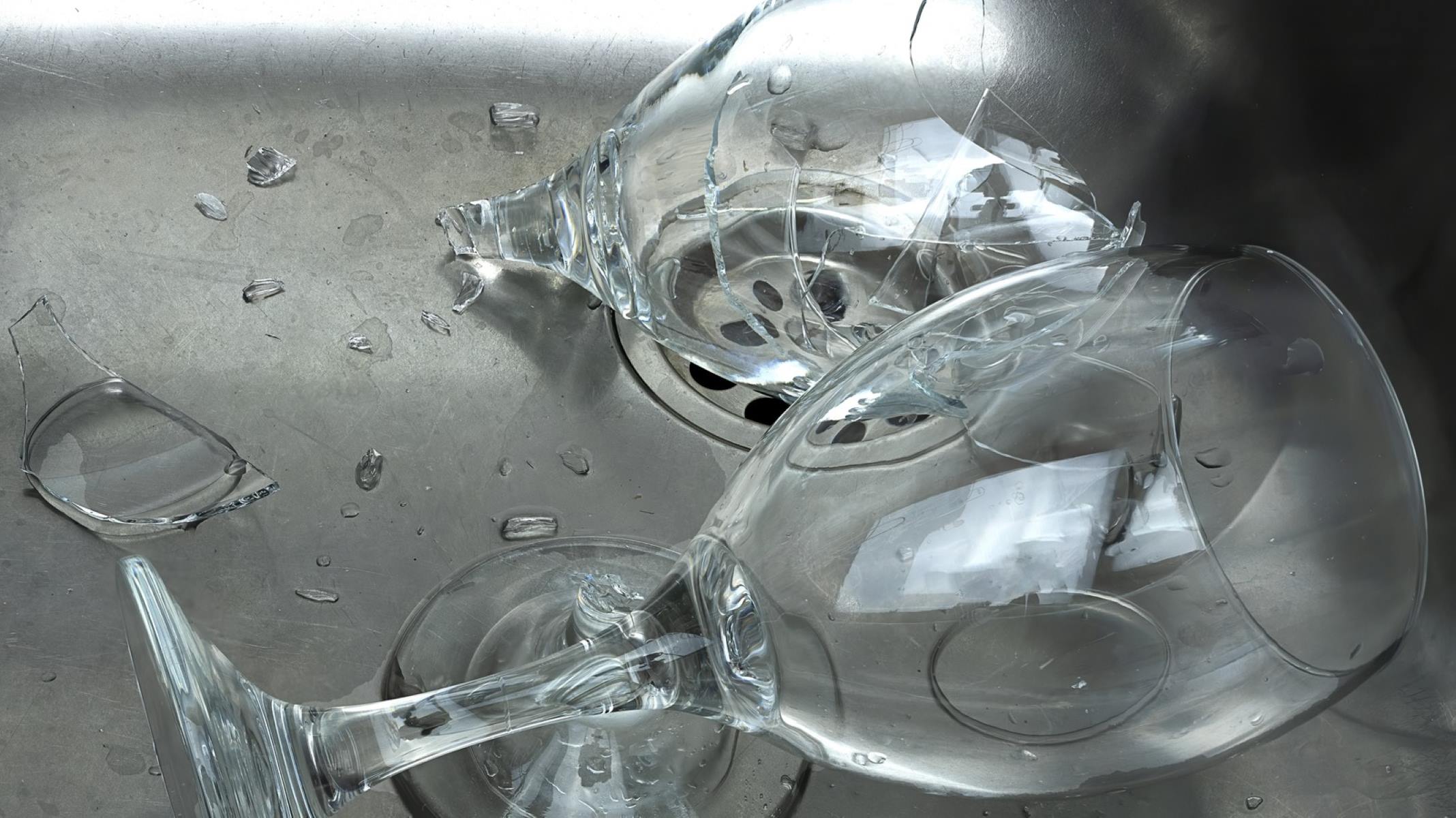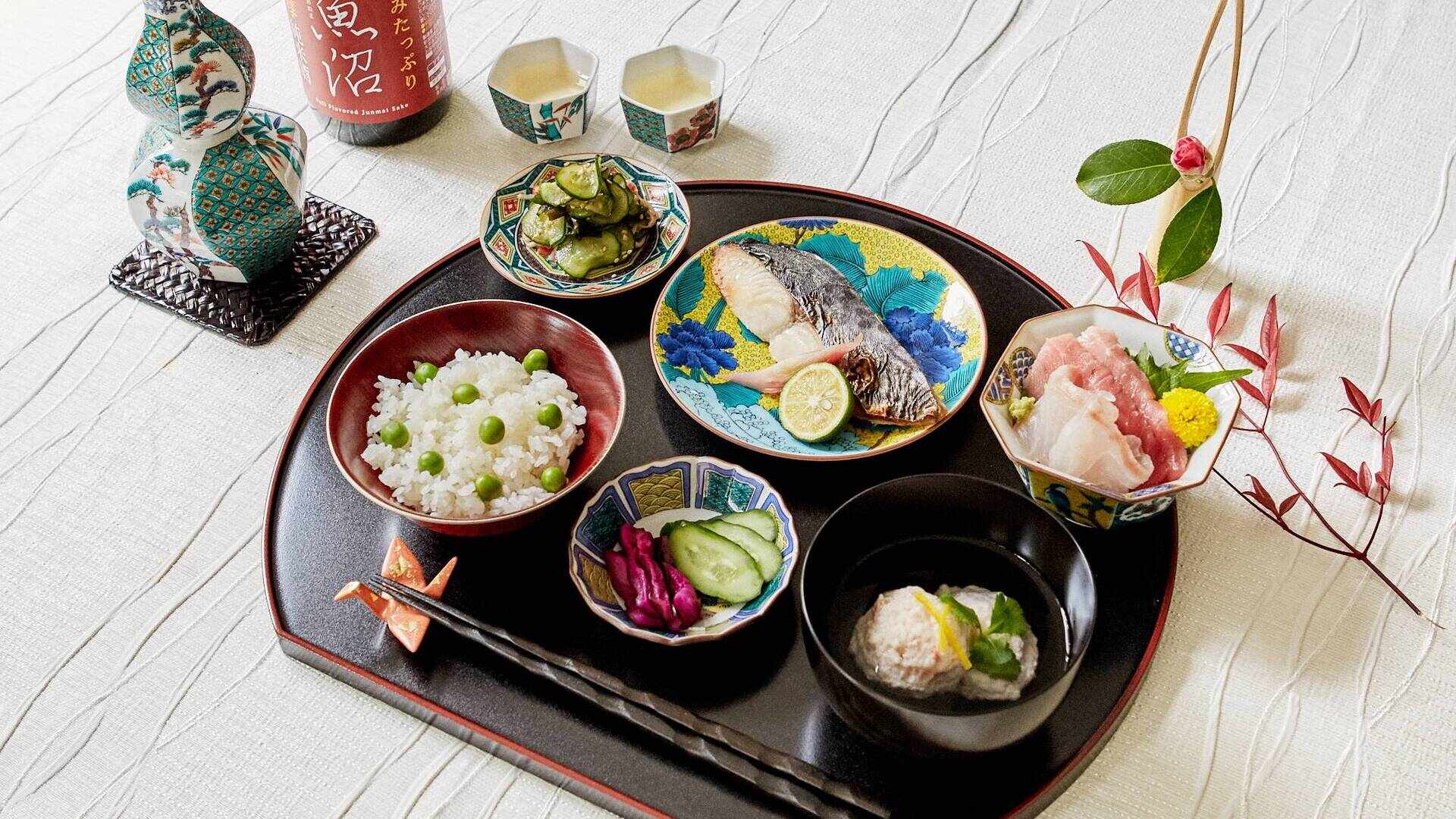Home>Dining>Tableware>What Constitutes Disposable Tableware Products?


Tableware
What Constitutes Disposable Tableware Products?
Modified: December 7, 2023
Discover what constitutes disposable tableware products and how they can enhance your dining experience. Explore a wide range of eco-friendly, convenient, and stylish tableware options to suit any occasion and reduce your environmental footprint.
(Many of the links in this article redirect to a specific reviewed product. Your purchase of these products through affiliate links helps to generate commission for Storables.com, at no extra cost. Learn more)
Introduction
Tableware plays an essential role in our daily lives, whether it’s for enjoying a meal with family and friends or hosting a special occasion. While traditional tableware is often cherished for its elegance and durability, disposable tableware has gained immense popularity due to its convenience and ease of use. Disposable tableware products are designed to be used once and then discarded. In recent years, the market for disposable tableware has expanded significantly, offering a wide range of options to cater to various needs and preferences.
Disposable tableware is typically made from materials such as paper, plastic, foam, bamboo, wood, or biodegradable and compostable alternatives. Each type of product has its own unique benefits and drawbacks, which we will explore in this article. It is important to understand the different types of disposable tableware available in order to make informed choices that align with our values and priorities.
Throughout this article, we will delve into the various types of disposable tableware products, examine their features, advantages, and disadvantages, and consider their environmental impact. By gaining a comprehensive understanding of disposable tableware, we can make conscious decisions that balance convenience and sustainability.
Key Takeaways:
- Embrace sustainable alternatives like biodegradable and compostable tableware to minimize the environmental impact of disposable options. Make conscious choices to support responsible waste management and reduce plastic pollution.
- Balance convenience with sustainability by considering reusable tableware for long-term eco-friendly solutions. Prioritize responsible consumption and advocate for improved waste management infrastructure to create a more sustainable future.
Read more: Where To Store Disposable Tableware
Definition of Disposable Tableware
Disposable tableware refers to a range of products that are designed to be used for eating, serving, and drinking, and are intended for single-use before being discarded. These products offer a convenient and time-saving solution, especially in situations where washing and cleaning traditional tableware may be impractical or inconvenient.
Disposable tableware includes items such as plates, bowls, cups, cutlery (knives, forks, spoons), straws, napkins, and more. These products are commonly used in various settings, including households, restaurants, cafes, catering services, events, picnics, and other social gatherings.
One of the key distinguishing factors of disposable tableware is that it is typically made from materials that are lightweight, affordable, and easy to produce. This allows for mass production and widespread availability, making them accessible to a wide range of consumers.
Furthermore, to ensure convenience and minimize the effort required for cleanup, disposable tableware is often designed to be disposable-friendly. For example, plates and bowls may have a curved rim to prevent spillage, cups may come with lids and straws for easy consumption, and cutlery may be pre-packaged for individual use.
It is important to note that while disposable tableware is intended for single-use, there are some instances where certain products can be reused, depending on their material and condition. For example, plastic cups and cutlery can sometimes be washed and reused to reduce waste.
Disposable tableware provides a practical solution for a variety of situations. From casual outdoor gatherings to formal events or busy households, disposable tableware offers convenience and time-saving benefits.
However, it is crucial to balance the advantages of disposable tableware with its potential impact on the environment. The convenience it offers should be weighed against the need for sustainability and responsible waste management.
Types of Disposable Tableware Products
Disposable tableware products come in various types to cater to different needs and preferences. Let’s explore some of the most common types:
Paper Products:
Paper tableware is a popular choice due to its biodegradability and relatively low environmental impact. It includes paper plates, bowls, cups, and napkins. Paper products are lightweight, making them easy to handle and dispose of. They are often made from recycled materials and can be recycled after use, reducing the overall waste generated.
Plastic Products:
Plastic tableware, such as plates, cups, and cutlery, is lightweight, durable, and cost-effective. However, it has garnered criticism due to its negative impact on the environment. Traditional plastic tableware is not biodegradable and can persist in landfills for hundreds of years. However, there are now eco-friendly alternatives available, such as biodegradable or compostable plastics, which break down more quickly and have a reduced environmental impact.
Foam Products:
Foam tableware, commonly known as Styrofoam, is lightweight, insulating, and cost-effective. It is often used for take-out meals, picnics, and events. However, foam products pose significant environmental concerns. They are not easily recyclable due to their composition, and their production and disposal contribute to pollution and waste accumulation.
Bamboo and Wood Products:
Bamboo and wood tableware have gained popularity due to their natural and sustainable characteristics. These products are often made from renewable resources and are biodegradable, making them a greener option. Bamboo and wood plates, bowls, and utensils provide an eco-friendly alternative to plastic tableware.
Biodegradable and Compostable Products:
Biodegradable and compostable tableware is designed to break down naturally and return to the environment. It is typically made from plant-based materials, such as cornstarch, sugarcane fiber, or bagasse. These products offer a more environmentally friendly alternative to traditional disposable tableware since they minimize waste and have a reduced carbon footprint.
It is important to note that while biodegradable and compostable products are more sustainable than their conventional counterparts, proper disposal is crucial. These items should be disposed of in composting facilities or with organic waste to ensure they can decompose properly.
When choosing disposable tableware, it is essential to consider the environmental impact of the materials used and opt for products that align with sustainable practices and waste management efforts.
Paper Products
Paper tableware is a popular choice in the realm of disposable tableware due to its eco-friendliness and versatility. It offers a convenient and sustainable alternative to traditional tableware options. Let’s explore the different types of paper products used for disposable tableware:
Paper Plates:
Paper plates are one of the most commonly used disposable tableware items. They are available in various sizes and designs to accommodate different serving needs. Paper plates are lightweight, making them easy to handle, dispose of, and transport. They are typically coated with a thin layer of wax or polyethylene to enhance their durability and prevent leakage. What makes paper plates environmentally friendly is their ability to biodegrade, reducing the impact on landfills and ecosystems.
Paper Bowls:
Similar to paper plates, paper bowls are available in different sizes and are suitable for serving soups, salads, desserts, and other dishes. They are often used for casual dining, take-out, and outdoor events. Paper bowls have the advantage of being lightweight, yet sturdy enough to hold various types of food. They can also be easily disposed of and recycled, minimizing waste.
Paper Cups:
Paper cups are commonly used for hot and cold beverages such as coffee, tea, soft drinks, and water. They are designed to withstand the heat of hot beverages and offer insulation to prevent heat from transferring to the hands of the user. Paper cups usually have a thin plastic lining to make them leak-resistant and enhance their functionality. However, proper recycling and disposal of paper cups are essential to minimize their environmental impact.
Paper Napkins:
Paper napkins are an essential component of disposable tableware. They are used for wiping hands and mouths to maintain cleanliness during meals. Paper napkins are available in a variety of sizes, thicknesses, and designs to suit different occasions and preferences. They are biodegradable, making them an eco-friendly option compared to reusable cloth napkins.
Paper products not only offer convenience and ease of use but also contribute to waste reduction and environmental sustainability. When choosing paper tableware, opting for products made from recycled materials and ensuring proper recycling or composting after use can further enhance their eco-friendliness. Additionally, selecting paper products from brands committed to sustainable practices can help support responsible consumption.
Read more: What Is The Best Tableware?
Plastic Products
Plastic tableware has been widely used in the realm of disposable tableware due to its convenience, durability, and affordability. However, it is important to be aware of the environmental impact associated with traditional plastic products and explore more sustainable alternatives. Let’s delve into the different types of plastic products commonly used for disposable tableware:
Plastic Plates:
Plastic plates are a common sight in picnics, parties, and outdoor events. They are lightweight and break-resistant, making them suitable for various occasions. Traditional plastic plates are made from polystyrene (PS) or polypropylene (PP), which are not biodegradable. These plates can persist in landfills for hundreds of years, contributing to environmental pollution. However, there are now biodegradable or compostable plastic plates available that are made from plant-based materials and break down more quickly.
Plastic Cups:
Plastic cups are widely used for serving beverages at parties, events, and fast-food establishments. They are typically made from polyethylene terephthalate (PET), which is a lightweight and transparent plastic. Traditional plastic cups are not biodegradable and pose significant environmental challenges when improperly disposed of. To mitigate this impact, eco-friendly alternatives are emerging, such as cups made from bio-plastics derived from renewable resources.
Plastic Cutlery:
Plastic cutlery, including knives, forks, and spoons, is often used for convenience during outdoor activities, picnics, and fast-food dining. Similar to plastic plates and cups, traditional plastic cutlery is not biodegradable and can persist in the environment for a long time, contributing to pollution. However, there are now compostable or biodegradable plastic cutlery options available that are made from plant-based materials and break down more easily.
Read more: What Constitutes A Formal Table Setting?
Plastic Straws:
Plastic straws have gained significant attention due to their negative impact on the environment, particularly on marine life. Single-use plastic straws can take hundreds of years to decompose and often end up polluting water bodies and harming marine ecosystems. As a result, there has been a push for alternatives to plastic straws, such as paper, bamboo, or metal straws, which are more sustainable options.
When considering plastic tableware, it is important to prioritize the use of sustainable alternatives. Biodegradable or compostable plastics, as well as reusable options, minimize the environmental footprint associated with traditional plastic tableware. Additionally, it is crucial to dispose of plastic tableware properly and support initiatives that promote recycling and responsible waste management.
Foam Products
Foam tableware, often referred to as Styrofoam, has been widely used in the realm of disposable tableware due to its lightweight nature, insulating properties, and affordability. However, it is important to understand the environmental impact associated with foam products and explore more sustainable alternatives. Let’s delve into the characteristics and considerations of foam products:
Foam Plates:
Foam plates are commonly used for picnics, outdoor events, and takeaway meals. They are lightweight and provide good insulation to keep food warm. Foam plates are made from expanded polystyrene (EPS), which can take hundreds of years to decompose. Additionally, the manufacturing and disposal of foam plates contribute to pollution and waste accumulation. Considerations should be made to opt for eco-friendly alternatives or reusable plates to reduce the environmental impact.
Foam Cups:
Foam cups have been popular for serving hot beverages, such as coffee or tea, due to their heat insulation properties. Like foam plates, foam cups are made from expanded polystyrene, which is not biodegradable and poses significant environmental challenges. The production and waste management practices associated with foam cups have been criticized for contributing to pollution and littering. Sustainable alternatives, such as compostable or biodegradable cups, or the use of reusable cups, offer greener options to consider.
Foam Containers:
Foam containers, often used for fast food takeout or food delivery, provide insulation and help keep food warm. They are also made from expanded polystyrene, which presents significant environmental concerns. Foam containers are not easily recyclable due to their chemical composition and tend to end up in landfills or as litter, impacting ecosystems and contributing to pollution. Exploring alternatives, such as compostable or biodegradable containers made from plant-based materials, can help reduce the environmental impact of food packaging.
Given the environmental challenges associated with foam products, it’s essential to consider more sustainable options when choosing disposable tableware. Opting for materials that are biodegradable, compostable, or made from renewable resources can significantly reduce the environmental footprint. Additionally, supporting initiatives that promote recycling and responsible waste management helps minimize the negative impact of foam products on our planet.
Bamboo and Wood Products
Bamboo and wood tableware have gained popularity in recent years as sustainable alternatives to traditional disposable tableware made from plastic or foam. These natural materials offer eco-friendly options that are not only biodegradable but also aesthetically pleasing. Let’s explore the characteristics and advantages of bamboo and wood products:
Bamboo Plates, Bowls, and Utensils:
Bamboo tableware is a viable alternative to plastic or foam products. Bamboo is a fast-growing and highly renewable resource, making it an environmentally friendly choice. Plates, bowls, and utensils made from bamboo are lightweight, durable, and have a natural and rustic appearance. They are often treated with food-safe coatings to enhance their longevity and resistance to moisture. Bamboo tableware can be reused multiple times and composted at the end of its life cycle.
Wooden Plates, Bowls, and Utensils:
Wood tableware, typically made from sustainably sourced materials such as birch or palm wood, offers a natural and elegant option for disposable tableware. These products are sturdy, heat-resistant, and often similar in appearance to traditional wooden servingware. Wood tableware can add a touch of sophistication to any event or gathering and can be reused or composted after use, reducing waste and promoting sustainability.
Read more: What Is The Proper Order Of Tableware?
Bamboo and Wood Cutlery:
Bamboo and wood cutlery, including knives, forks, and spoons, are a sustainable alternative to plastic or disposable metal cutlery. These utensils are lightweight, easy to use, and have a natural feel. They can be safely disposed of in compost or used for composting due to their biodegradable nature.
The use of bamboo and wood products for disposable tableware offers several environmental benefits. By opting for these sustainable alternatives, you support the reduction of plastic waste and the conservation of natural resources. Furthermore, many bamboo and wood products are free from harmful chemicals and are food-safe, providing a healthier option for both consumers and the environment.
It is important to note that while bamboo and wood tableware are more sustainable than plastic or foam options, responsible sourcing and production practices are necessary to ensure the long-term viability and preservation of forests and ecosystems. Additionally, proper disposal, such as composting, is crucial to maximize the environmental benefits of these natural materials.
Biodegradable and Compostable Products
Biodegradable and compostable tableware has gained significant attention in recent years as a more sustainable alternative to traditional disposable tableware made from materials such as plastic or foam. These products are designed to break down naturally and return to the environment, minimizing their impact on ecosystems and promoting responsible waste management. Let’s explore the characteristics and benefits of biodegradable and compostable tableware:
Biodegradable Products:
Biodegradable tableware is made from materials that can naturally decompose over time, such as plant-based plastics, bagasse (sugarcane fiber), or other renewable resources. These products break down through natural processes, such as microbial activity, into simpler compounds. Biodegradable tableware reduces the amount of waste sent to landfills and helps to conserve resources.
Compostable Products:
Compostable tableware is designed to break down even further and turn into compost, a nutrient-rich soil amendment. These products are typically made from organic materials, including cornstarch, wheat straw, palm leaf, or bamboo. Compostable tableware can go through composting systems and contribute to the production of nutrient-rich soil, closing the loop of a sustainable life cycle.
One key advantage of biodegradable and compostable tableware is that it does not leave behind harmful residues or pollutants in the environment. When these products decompose, they release carbon dioxide, water, and organic matter, leaving a minimal footprint. It’s important to note that the composting process requires specific conditions and facilities to effectively break down the materials, so it is crucial to dispose of compostable tableware in appropriate composting systems.
Biodegradable and compostable products offer a more environmentally friendly alternative to traditional disposable tableware. By utilizing these products, we can significantly reduce plastic waste, conserve resources, and support responsible waste management practices. It is important to look for certifications such as the Biodegradable Products Institute (BPI) certification or the Compostable logo to ensure the products meet the necessary standards for biodegradability and compostability.
While biodegradable and compostable tableware is more sustainable, it is essential to be aware of the specific requirements for composting or proper disposal in your area. Additionally, promoting awareness and advocating for robust composting infrastructure can further enhance the benefits and adoption of these eco-friendly options.
Read more: How To Make Tableware From Wood
Advantages of Using Disposable Tableware
Disposable tableware offers several advantages that make it a convenient and practical choice for various occasions. Let’s explore the benefits of using disposable tableware:
Convenience and Time-saving:
Disposable tableware eliminates the need for washing and cleaning, which saves time and effort. Whether hosting a party, organizing a picnic, or catering an event, disposable tableware allows for quick and easy cleanup, allowing you to focus on enjoying the occasion without worrying about the aftermath.
Portability and Versatility:
Disposable tableware is lightweight and easy to transport, making it ideal for outdoor gatherings, picnics, and camping trips. It allows you to enjoy meals and refreshments conveniently, without the need to carry heavy or fragile traditional tableware. Disposable tableware also comes in a variety of sizes and designs, catering to different serving needs and adding a touch of style to any event.
Hygiene and Sanitation:
Disposable tableware offers a hygienic option, ensuring cleanliness and preventing the spread of germs. It provides a fresh and untouched serving vessel for each individual, reducing the risk of cross-contamination. This makes it particularly beneficial for public events or settings where maintaining proper sanitation is crucial.
Read more: Where Is Acopa Tableware Manufactured?
Cost-effective Solution:
Disposable tableware is often more cost-effective compared to purchasing and maintaining a large collection of traditional tableware. It eliminates the need to invest in expensive sets and ensures that the resources used for cleaning and maintenance, such as water and detergent, are minimized. This makes disposable tableware a cost-efficient option for hosting gatherings or events.
Wide Range of Options:
Disposable tableware comes in a wide range of materials, styles, and designs, allowing you to choose the most suitable option for your specific needs. Whether you prefer paper, plastic, foam, bamboo, or compostable alternatives, there is a vast selection available to cater to personal preferences, occasion requirements, and sustainability goals.
It is important to note that while disposable tableware offers convenience and practicality, it is essential to strike a balance between its advantages and the impact on the environment. Choosing sustainable and eco-friendly options, practicing responsible waste management, and supporting recycling initiatives can help mitigate the drawbacks associated with disposable tableware.
Disadvantages of Using Disposable Tableware
While disposable tableware offers convenience and practicality, there are several disadvantages and environmental concerns associated with its use. It’s important to consider these drawbacks when using disposable tableware:
Environmental Impact:
One of the major concerns with disposable tableware is its environmental impact. Most disposable tableware products, especially those made from plastic or foam, are not easily biodegradable and can take hundreds of years to decompose. The production, use, and disposal of disposable tableware contribute to plastic pollution and waste accumulation in landfills, leading to detrimental effects on ecosystems and wildlife.
Read more: How Can I Replace WMF Tableware?
Resource Consumption:
Manufacturing disposable tableware requires significant energy, water, and raw materials. Whether it’s the production of paper, plastic, or other materials, the extraction of resources and energy-intensive manufacturing processes can contribute to resource depletion and carbon emissions, exacerbating the environmental footprint associated with disposable tableware.
Single-Use Mentality:
Disposable tableware promotes a single-use mentality, which can lead to excessive waste generation. When using disposable tableware, items are used once and then discarded, contributing to the “throwaway culture.” This mindset perpetuates the consumption and disposal of resources, rather than promoting long-term sustainability and reuse.
Lack of Durability:
Compared to traditional tableware, disposable tableware is often less durable. This can result in issues such as leakages, breakages, or difficulty in handling certain foods. The lower durability of disposable tableware may lead to food waste and frustration, requiring additional care when serving or consuming meals.
Limited Recycling Options:
Not all disposable tableware is readily recyclable, particularly when it comes to certain plastics or foam products. This can pose challenges in waste management, as proper recycling infrastructure for these materials may be lacking in many areas. As a result, disposable tableware often ends up in landfills or as litter, contributing to the growing waste crisis.
To mitigate these disadvantages, efforts can be made to minimize the use of disposable tableware and shift towards reusable alternatives. Investing in reusable tableware, encouraging responsible waste management practices, promoting recycling initiatives, and supporting the use of eco-friendly and sustainable disposable tableware options can help address the drawbacks associated with disposable tableware and reduce its impact on the environment.
Environmental Impact of Disposable Tableware
The environmental impact of disposable tableware is a critical concern due to its widespread use and significant contribution to plastic pollution and waste. Understanding the environmental consequences associated with disposable tableware is crucial in making informed choices that prioritize sustainability. Let’s explore the environmental impact of disposable tableware:
Plastic Pollution:
Disposable tableware made from plastic, including plates, cups, cutlery, and straws, contributes to the global plastic pollution crisis. Plastics are not easily biodegradable and can persist in the environment for hundreds of years. When improperly disposed of, plastic tableware often ends up in landfills, waterways, and oceans, posing a threat to marine life and ecosystems. It is estimated that millions of tons of plastic waste enter the ocean every year, endangering marine animals and impacting ecosystems.
Waste Accumulation:
The use of disposable tableware leads to the accumulation of waste in landfills. Given its single-use nature, disposable tableware generates large volumes of waste that take up space and contribute to environmental degradation. These landfills emit greenhouse gases, contributing to climate change and further exacerbating the environmental impact of disposable tableware.
Resource Depletion:
Disposable tableware contributes to the depletion of natural resources. The production of materials like plastic or paper requires the extraction and processing of raw materials, including fossil fuels and trees. The high energy consumption and water usage associated with manufacturing disposable tableware contribute to resource depletion and carbon emissions, adding to the environmental footprint.
Energy and Water Consumption:
The manufacturing process of disposable tableware consumes significant amounts of energy and water. From the extraction of raw materials to the production and transport processes, the energy and water required for manufacturing disposable tableware contribute to overall resource consumption and environmental impact. Reducing the demand for disposable tableware can help conserve energy and water resources.
Carbon Footprint:
The production and disposal of disposable tableware contribute to greenhouse gas emissions and climate change. The extraction of raw materials, manufacturing processes, transportation, and waste management result in the release of carbon dioxide and other greenhouse gases into the atmosphere. Limiting the use of disposable tableware and opting for more sustainable alternatives can help reduce carbon emissions and mitigate the impact on the climate.
Addressing the environmental impact of disposable tableware requires a shift towards sustainable practices. This includes reducing the consumption of disposable tableware, opting for reusable alternatives, promoting recycling and composting, supporting the use of eco-friendly materials, and advocating for improved waste management infrastructure. By making conscious choices, individuals, businesses, and communities can contribute to mitigating the environmental impact of disposable tableware and moving towards a more sustainable future.
Conclusion
Disposable tableware has become an integral part of our modern lifestyle, offering convenience and practicality for various occasions. However, it is crucial to consider the environmental impact associated with disposable tableware and explore more sustainable alternatives. While disposable tableware provides convenience, it comes with drawbacks that include plastic pollution, waste accumulation, resource depletion, and carbon emissions.
Throughout this article, we have explored the different types of disposable tableware, including paper, plastic, foam, bamboo, wood, and biodegradable/compostable options. Each type has its own advantages and disadvantages, but it is essential to prioritize sustainability when making choices.
Reusable tableware, such as ceramic plates, metal cutlery, and glass cups, offers an eco-friendly option that reduces waste and conserves resources. By investing in quality reusable tableware, we can significantly reduce the environmental impact associated with disposable options.
When disposable tableware is necessary, opting for more sustainable alternatives is crucial. Biodegradable and compostable tableware made from plant-based materials can minimize waste and contribute to responsible waste management. However, it’s important to ensure proper disposal in composting facilities to maximize their environmental benefits.
To mitigate the environmental impact of disposable tableware, it is pivotal to promote responsible consumption and waste management practices. This includes proper recycling, supporting initiatives for improved waste management infrastructure, and advocating for reducing the use of disposable tableware overall.
Ultimately, striking a balance between convenience and sustainability is essential. By being mindful of our choices, we can minimize the environmental consequences of disposable tableware and contribute to a more sustainable future. Whether it’s opting for reusable options, selecting eco-friendly disposable alternatives, or promoting recycling, every action can make a difference in reducing the environmental impact of disposable tableware.
By taking these steps, we can ensure that our tableware choices align with our commitment to protecting our planet for future generations. Together, we can make a positive impact and pave the way towards a more sustainable and environmentally conscious society.
Frequently Asked Questions about What Constitutes Disposable Tableware Products?
Was this page helpful?
At Storables.com, we guarantee accurate and reliable information. Our content, validated by Expert Board Contributors, is crafted following stringent Editorial Policies. We're committed to providing you with well-researched, expert-backed insights for all your informational needs.





0 thoughts on “What Constitutes Disposable Tableware Products?”